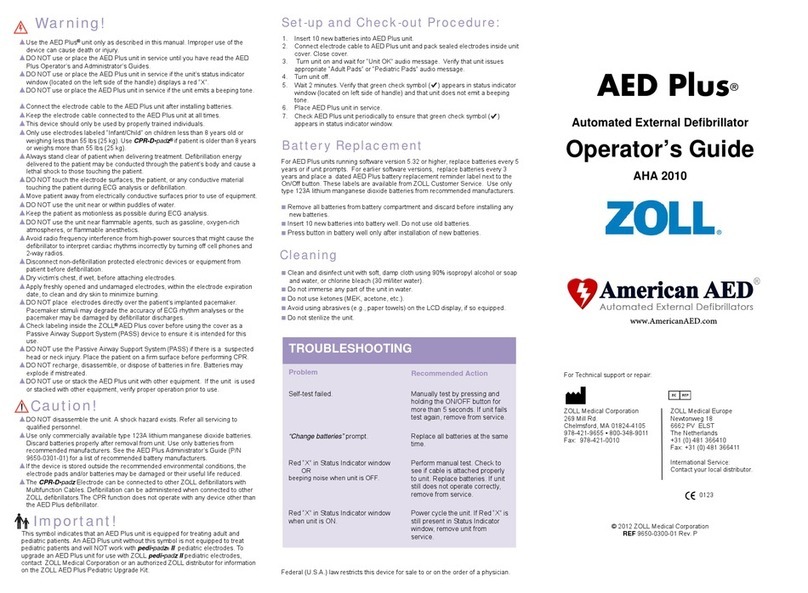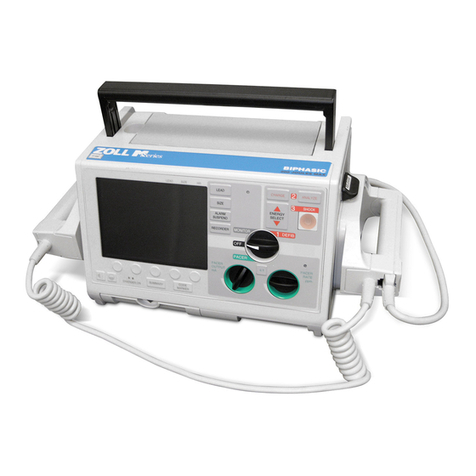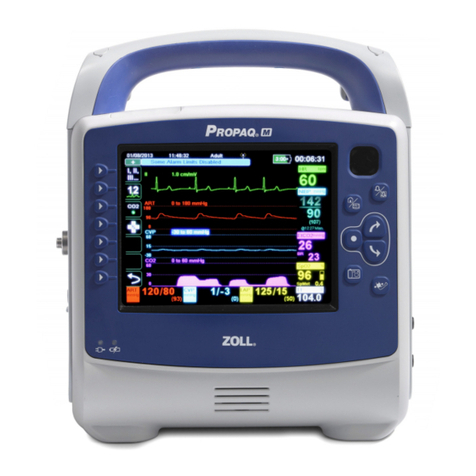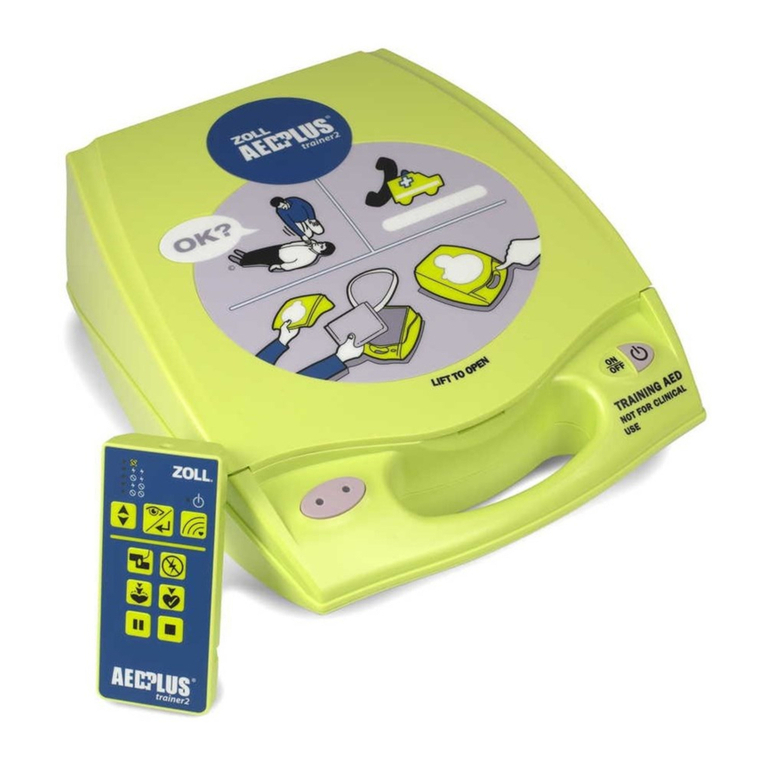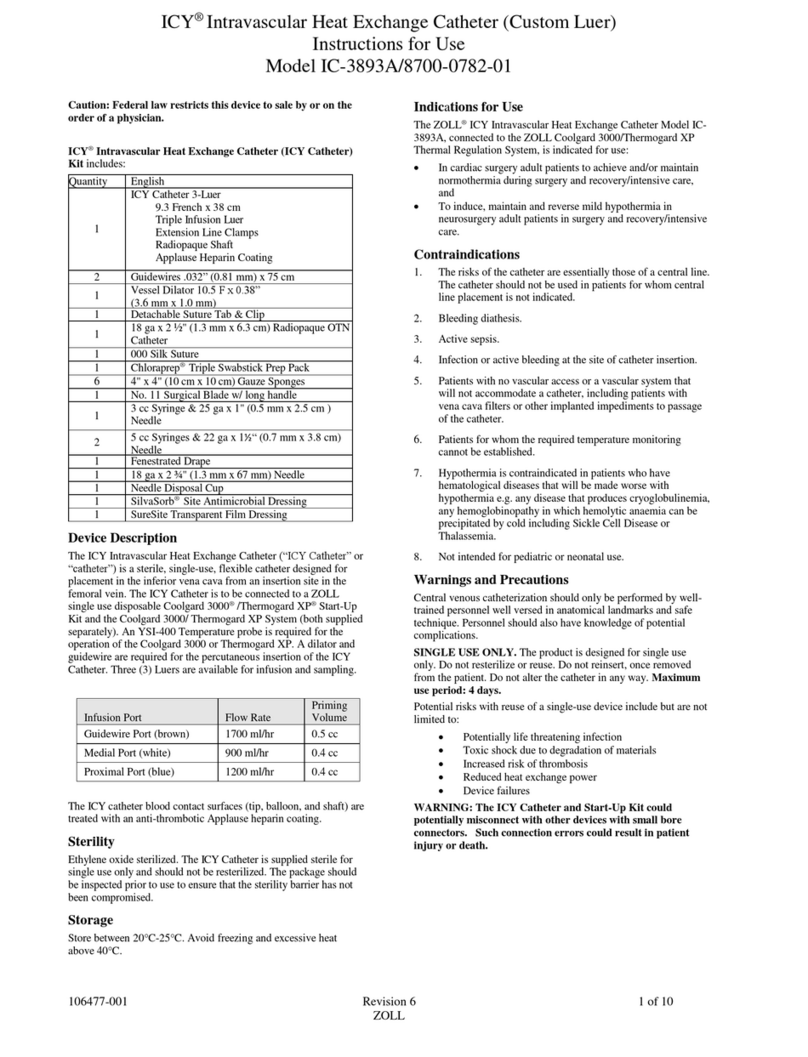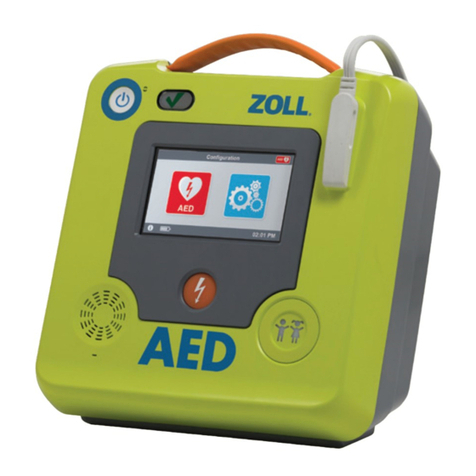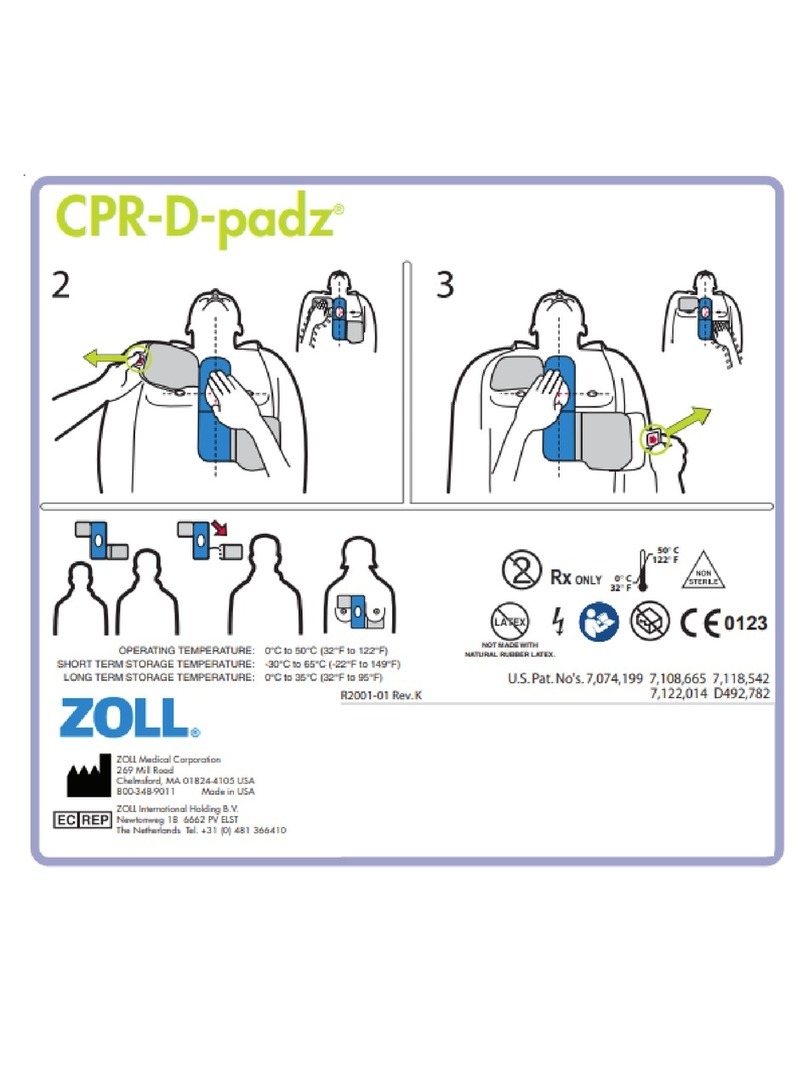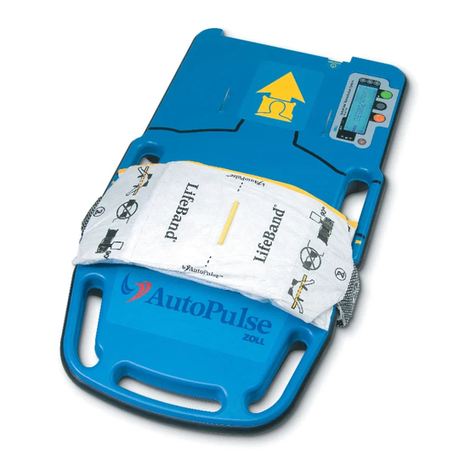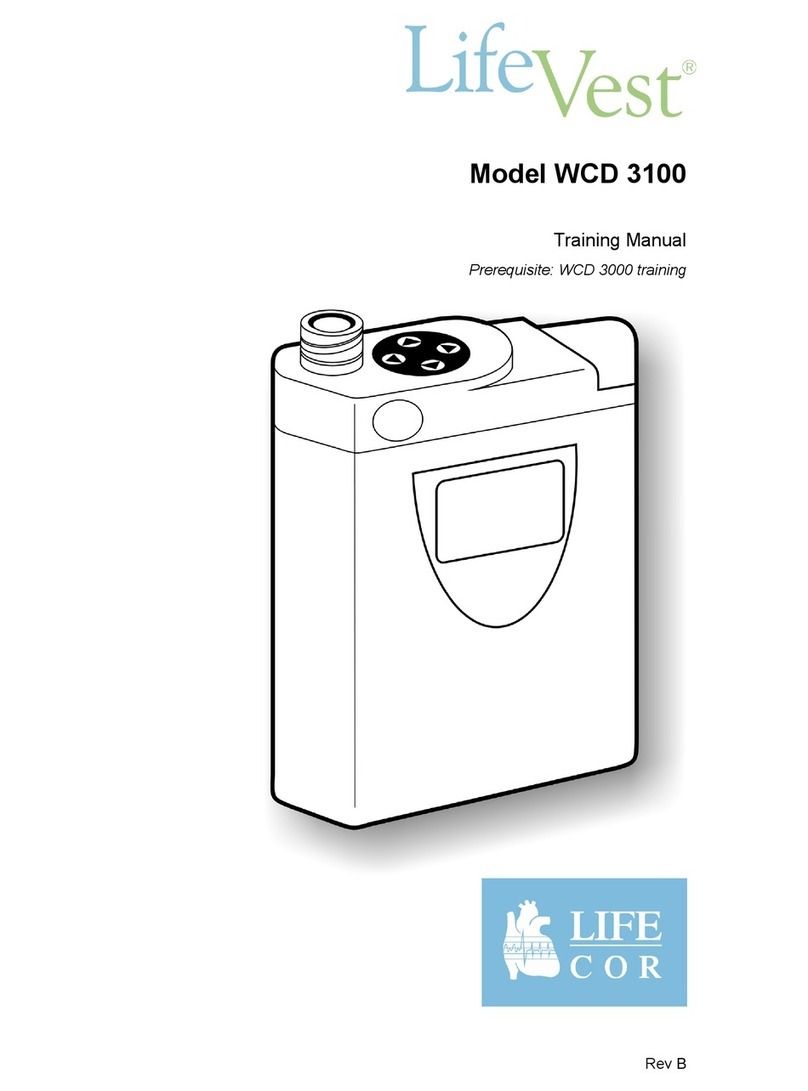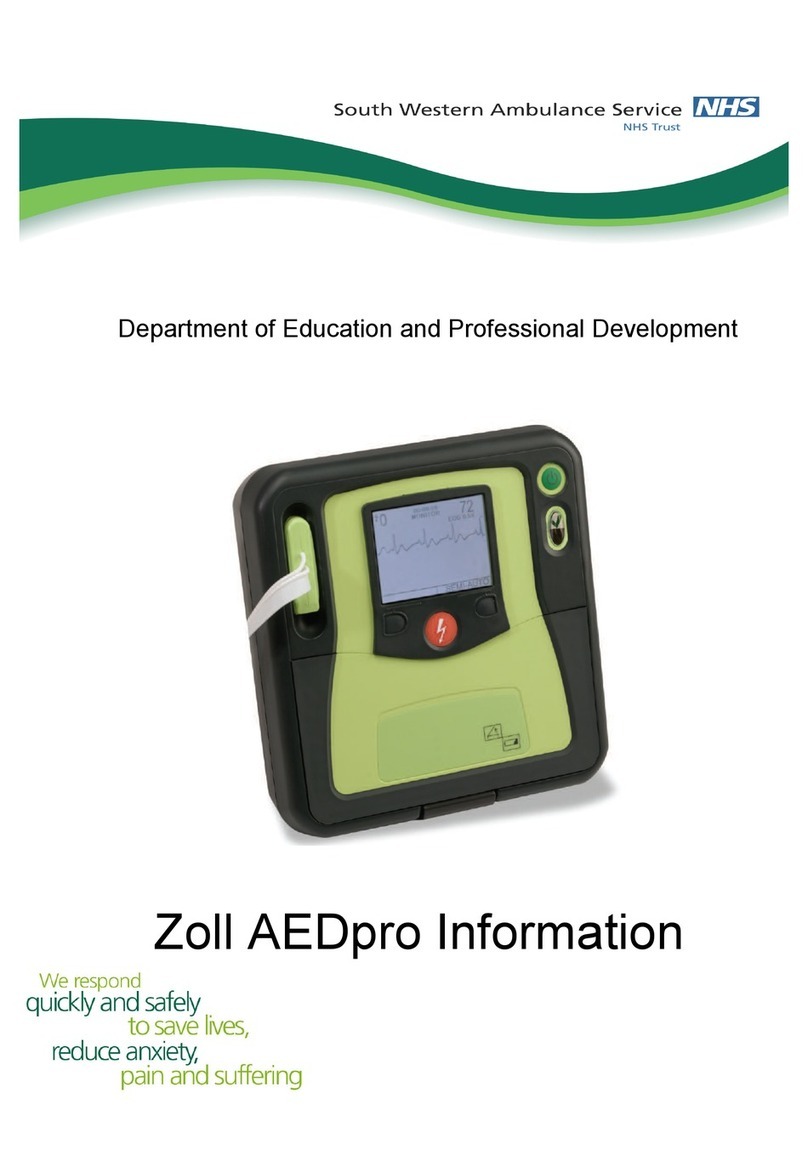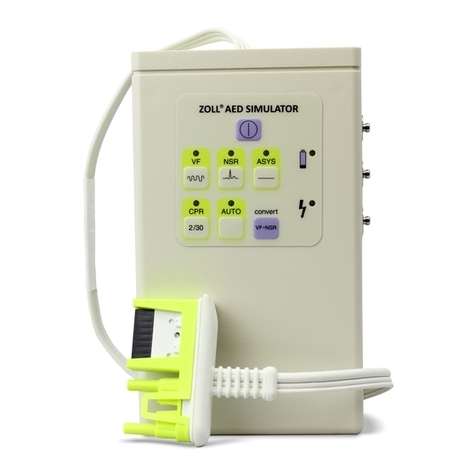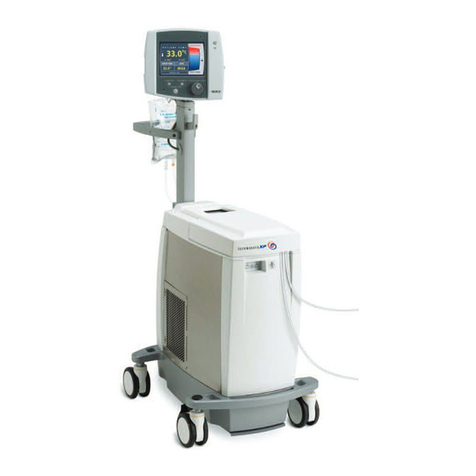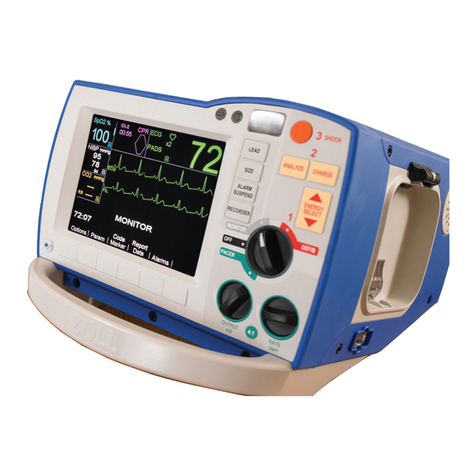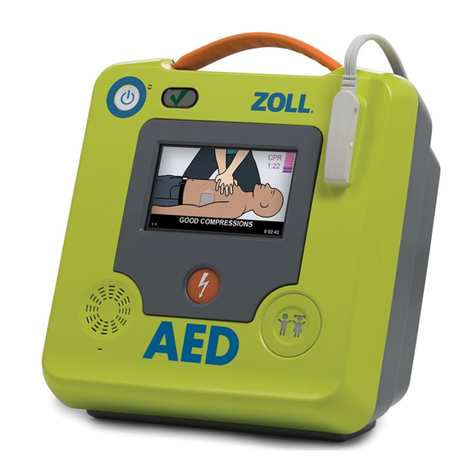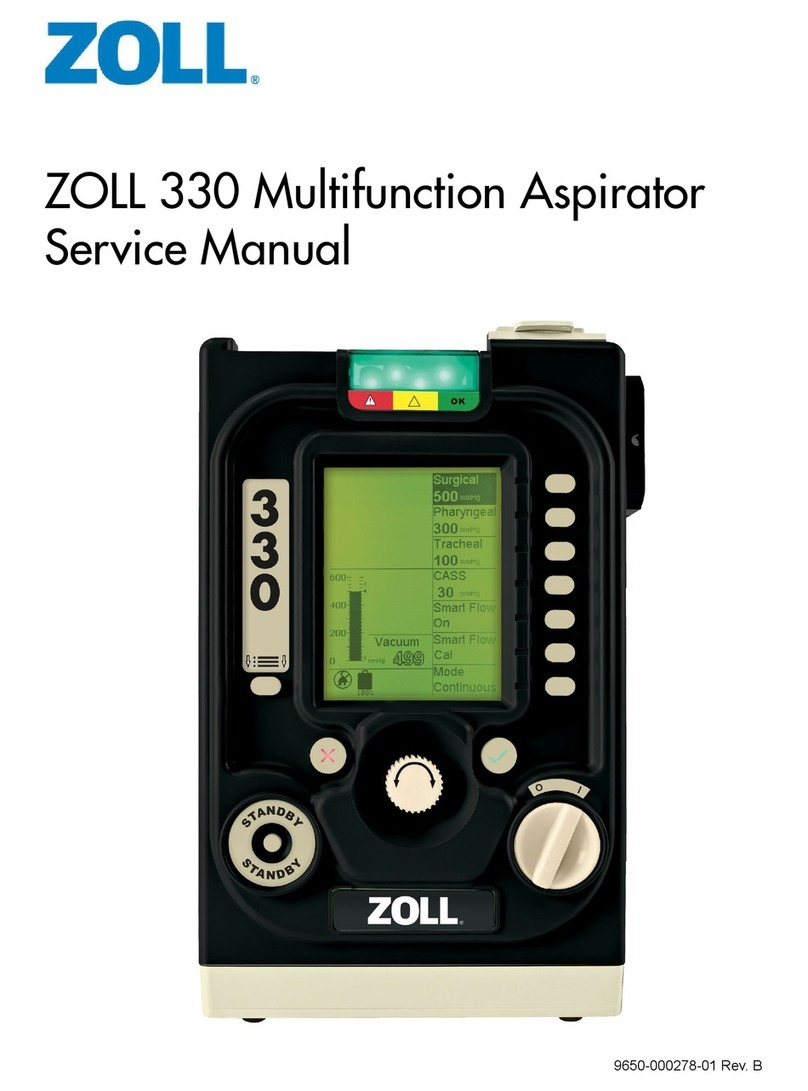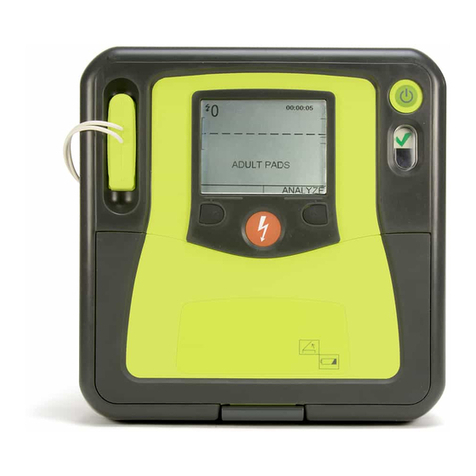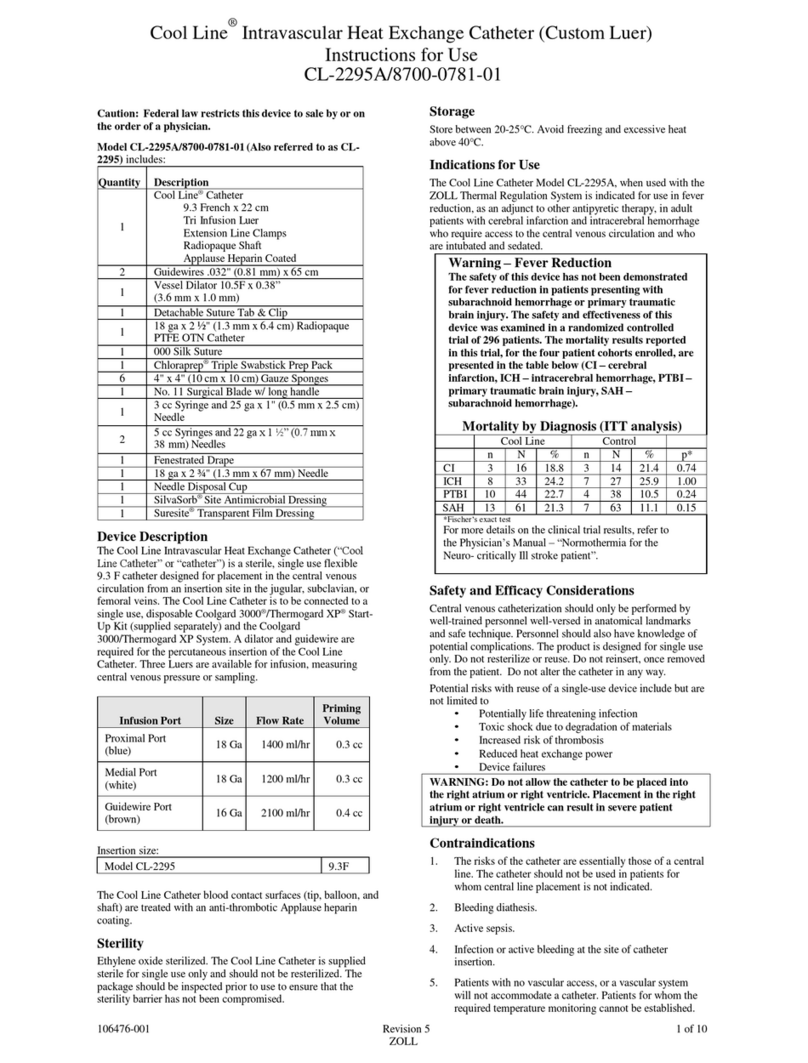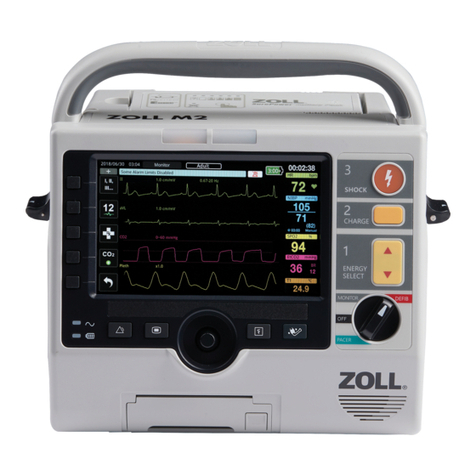
General Information
dine, digitalis, b-blockers,verapamil, etc.), and unexpected circulatory arrest
(duetoanesthesia, surgery, angiography, and other therapeutic or diagnostic
procedures). Itis safer, more reliable, and more rapidly applied in an emer-
gency than endocardialor other temporary electrodes.
2.
As a standby when standstill or bradycardia might beexpected-
As a stand-bywhen arrest or symptomatic bradycardia might be expected, the
external pacer is used especially in pacemaker procedures (e.g.,acute myocar-
dial infarction, drug toxicity, anesthesia, or surgery, especiallywhen distur-
bances of rhythmicity or conduction are present). Prophylacticplacement of
endocardialelectrode, which carries risks of displacement, infection, hemor-
rhage, embolization, perforation, phlebitis, and mechanicalor electrical stimula-
tion of ventricular tachycardia and fibrillation, can be avoided.
3.
Suppression of tachycardia-
An increase in heart rate from external pacingoften suppresses ventricular
ectopic activity and may prevent tachycardia.
Pacemaker Complications
Ventricular fibrillation will not respondto pacingand requires immediate defibrilla-
tion. (SeeChapter
4
for Emergency Defibrillation Procedure.) The patient's
dysryhthmia must therefore be determined immediately, so that appropriate
therapy can be employed. If the patient is in ventricular fibrillation and defibrillation
is successful, but cardiac standstill ensues (asystole),the pacemaker should be
used.
Ventricular or supraventriculartachycardias may be interruptedwith pacing but in
emergency or circulatory collapse, synchronized cardioversion is faster and more
certain. (SeeChapter
5
for SynchronizedCardioversion Procedure.)
Electromechanicaldissociation may occur following prolonged cardiac arrest
or in other disease states with myocardialdepression. Pacingmay then produce
ECG responses without effective mechanicalcontractions, and other treatment is
required.
Pacing may evoke repetitive responses, tachycardia, or fibrillation in the presence
of generalized hypoxia, myocardial ischemia, cardiac drug toxicity, electrolyte
imbalance,and other cardiac diseases.
Pacingby any methodtends to inhibit intrinsic rhythmicity. Abrupt cessation of
pacing, particularlyat rapid rates, can cause ventricular standstill and should be
avoided.
